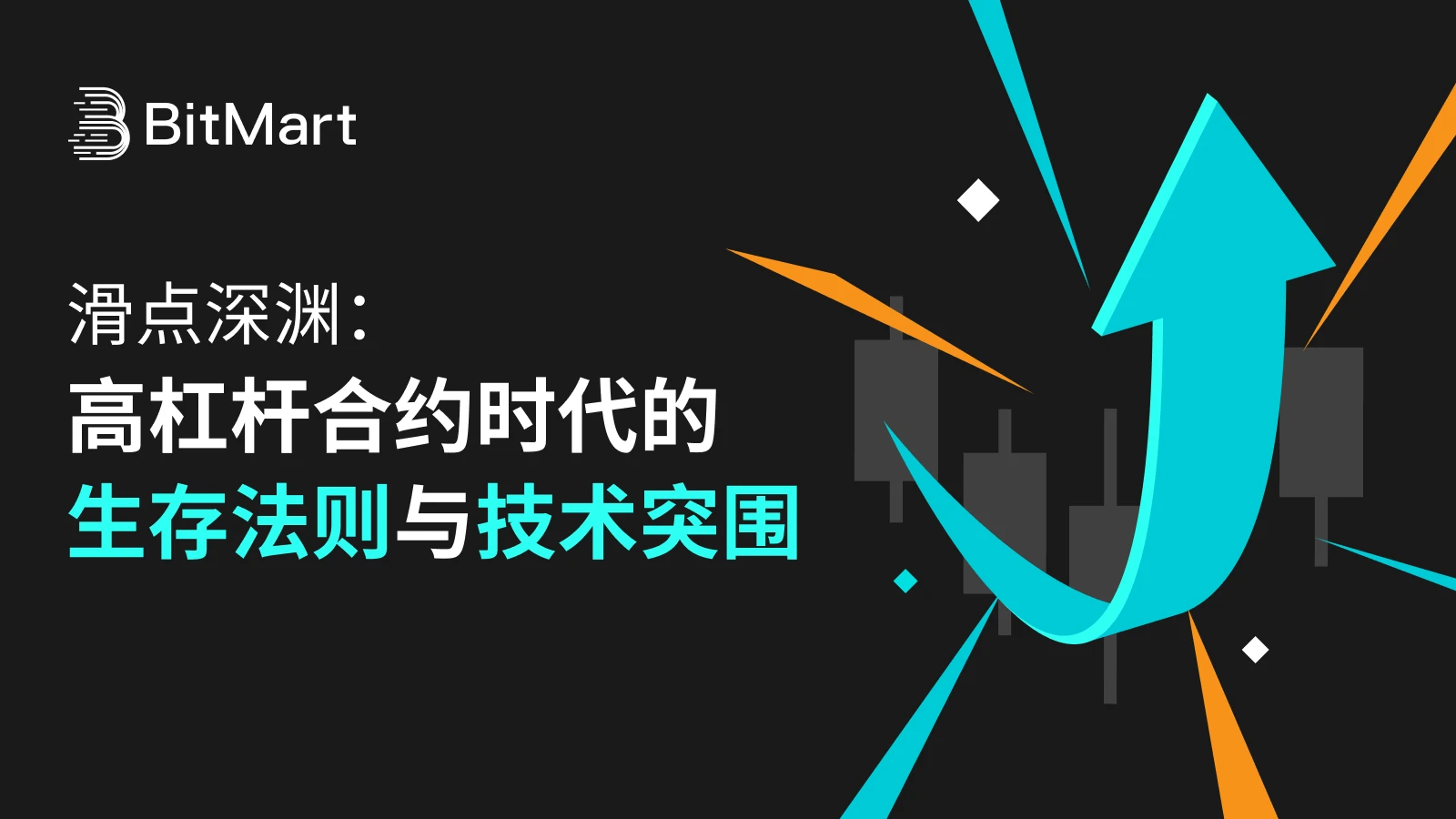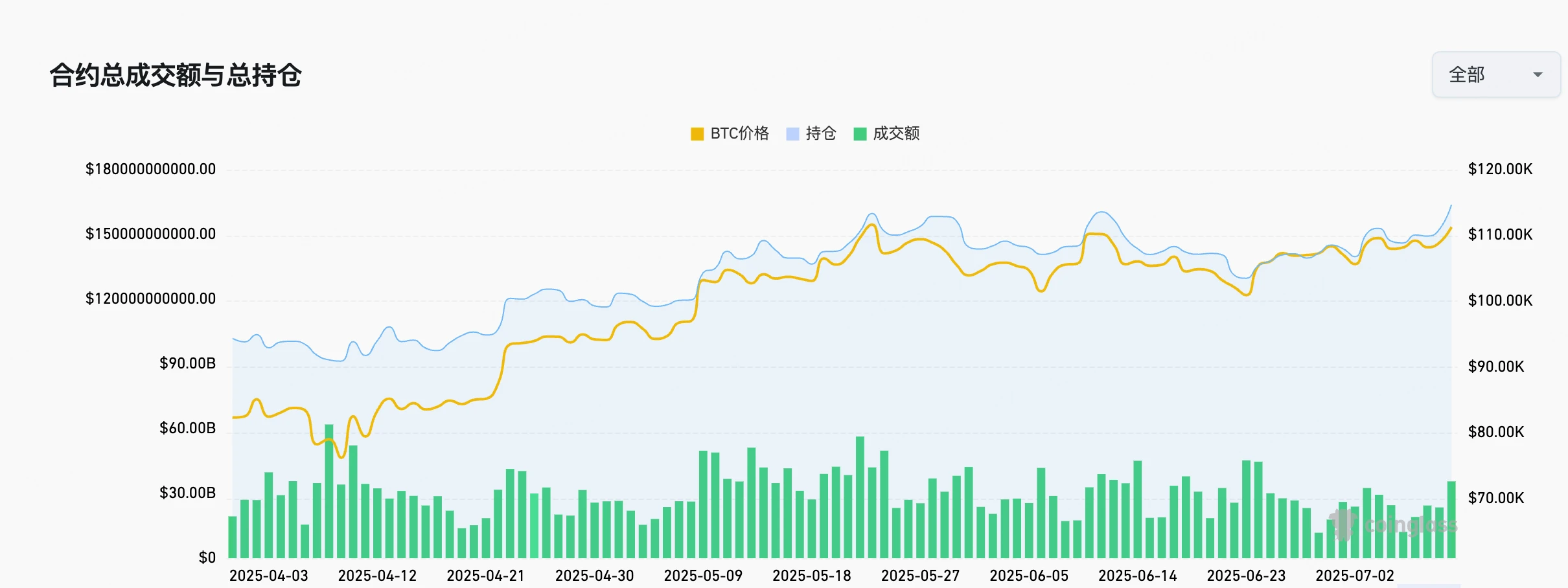
According to BitMart data, BTC has once again broken its historical high, with the spot price reaching as much as $123,215, marking a new wave of investment enthusiasm in the crypto market as it continues to heat up. In recent years, with the globalization of cryptocurrency trading and the influx of institutional funds, the contract trading market has experienced unprecedented explosive growth. As a market characterized by high leverage and strong volatility, contract trading offers investors higher potential returns but also comes with significant risks. In particular, the issue of slippage has become a pain point that many crypto traders cannot ignore. Therefore, how to effectively address the slippage problem has become a focal point of industry attention.
Current Status and Challenges of Crypto Market Contract Trading

According to the latest data from Coinglass, in the second quarter of 2025, the global contract open interest in the crypto market steadily increased, with the daily average contract trading volume continuously surpassing $300 billion, peaking at nearly $500 billion. This growth trend reflects the sustained enthusiasm of market participants for contract trading. However, high volatility and leverage effects have made contract trading not only a tool for investors seeking high returns but also a complex game of technology, risk, and psychology. For traders, accurately grasping market dynamics and avoiding potential risks has become the key to success in this uncertain market.
At the same time, the contract market has attracted a large number of new users, becoming a "hot land" in the eyes of many. However, as the market expands, the high-risk nature and complexity of contract trading have gradually exposed hidden costs, especially the issue of slippage. Slippage not only reduces the execution efficiency of trades but also amplifies potential losses in a highly volatile environment, becoming a fatal problem that new traders cannot ignore.
The Slippage Problem: The Invisible Killer in the Crypto Market
Slippage refers to the difference between the expected price and the actual execution price during the order execution process. In the crypto market, slippage is often caused by market volatility, insufficient liquidity, and technical bottlenecks. Especially during periods of extreme market fluctuations, traders' orders often cannot be executed at the expected price, resulting in additional costs, which undoubtedly represents a loss for users. For example, with a daily trading volume of $300 billion, if the slippage is 0.001%, the daily loss due to slippage would be $3 million.
Specifically, the reasons for slippage can be summarized as follows:
Market Volatility: The crypto market is known for its high volatility. During rapid price fluctuations, especially when large buy and sell orders occur in a short time, the market cannot digest orders in time, leading to a gap between the expected price and the actual execution price.
Insufficient Liquidity: Some trading pairs, especially niche coins or markets with low trading volume, have poor liquidity, making large orders prone to slippage. This situation is particularly evident in the crypto market, as compared to traditional financial markets, the liquidity and depth of the crypto market are generally weaker.
Technical Limitations: Factors such as the platform's technical architecture and system latency may also lead to slippage. Especially in high-frequency trading and extreme market conditions, the platform's response speed may not keep up with market fluctuations.
For many traders, slippage is not just an increase in trading costs; it also heightens the uncertainty of trading decisions and strategies. When a trader makes a large trade using leverage, slippage can even increase the risk of forced liquidation.
BitMart Slippage Protection Plan Phase II: From Risk Compensation to Ultimate Protection
BitMart understands the importance of the slippage issue to traders, which is why it has launched the upgraded "Slippage Protection Plan" Phase II. This upgrade not only lowers the compensation threshold but also enhances the controllability and transparency of slippage through innovative technical solutions.
1. Significant Reduction in Compensation Threshold
One of the highlights of the Slippage Protection Plan Phase II is the adjustment of the compensation threshold, requiring slippage to be reduced from the original 0.05% to 0.02%. This improvement allows even minor slippage to be captured in a timely manner and trigger compensation rules. For example, if the expected execution price of Bitcoin (BTC) is $100,000 and the actual execution price is $100,020 (a difference of $20), this small price difference can trigger compensation. This adjustment demonstrates BitMart's confidence in the platform's liquidity and engine stability, as well as its technological innovations.
2. Comprehensive Compensation and Tiered Incentives
The Slippage Protection Plan Phase II not only significantly expands the scope of compensation, from a single "margin slippage loss" to "full position slippage loss," ensuring that users receive adequate protection even in large trades. Meanwhile, new users who register and trade for the first time can enjoy a "200% difference refund" for abnormal slippage (with a single transaction cap of 2,000 USDT). Additionally, BitMart offers an extra 10% compensation benefit and priority review channel for users holding BMX tokens, further enhancing user loyalty to the platform and increasing the value of holding BMX.
3. Expansion of Supported Coins and Rapid Compensation
To better meet user needs, the Slippage Protection Plan Phase II has expanded the range of supported coins from the initial BTC and ETH to include eight major coins such as SOL, XRP, BNB, TRX, DOGE, and ADA, covering a broader market demand. At the same time, BitMart promises that once the review is approved, user compensation will be "credited instantly," ensuring that users can receive compensation promptly in any market environment, thereby enhancing their trust and security in trading.
The Slippage Protection Plan Phase II launched by BitMart undoubtedly provides traders with a certain level of protection, especially excelling in enhancing trading transparency and controllability. By lowering the compensation threshold, expanding the compensation scope, and introducing more efficient liquidity matching, the platform not only strengthens user trust but also attracts more high-frequency traders and large capital users. However, despite technological breakthroughs, extreme market conditions and trading pairs with poor liquidity may still lead to slippage, which undoubtedly raises higher demands on the platform's compensation mechanism.
In the future, BitMart seems intent on continuing to optimize this mechanism to adapt to changing market demands. By integrating cutting-edge technologies such as quantitative trading and artificial intelligence, the platform is expected to make further progress in enhancing the precision of slippage prevention and personalized services. If this trend continues, BitMart may further solidify its market position in the fiercely competitive crypto trading market.
Conclusion
In fact, the slippage problem has always been an unavoidable challenge in crypto market contract trading, especially in environments with high volatility and insufficient liquidity, where slippage not only increases trading costs but may also directly impact the success of trading strategies. As the market scale continues to expand and institutional funds flow in, effectively controlling slippage and improving trading efficiency has become a core issue that crypto trading platforms must face.
Currently, with BTC breaking new highs, the activity level in the crypto market is once again on the rise, which also means that trading volume and market volatility will further intensify. In this environment, the platform's technical architecture and risk management capabilities will directly determine its ability to provide users with a more stable and secure trading experience. The future focus of the industry will not only be on slippage control but also on how to leverage technologies such as quantitative trading and artificial intelligence to enhance trading precision, ensuring stable execution in extreme market conditions, and driving the entire crypto industry towards a more mature and regulated future.
免责声明:本文章仅代表作者个人观点,不代表本平台的立场和观点。本文章仅供信息分享,不构成对任何人的任何投资建议。用户与作者之间的任何争议,与本平台无关。如网页中刊载的文章或图片涉及侵权,请提供相关的权利证明和身份证明发送邮件到support@aicoin.com,本平台相关工作人员将会进行核查。




